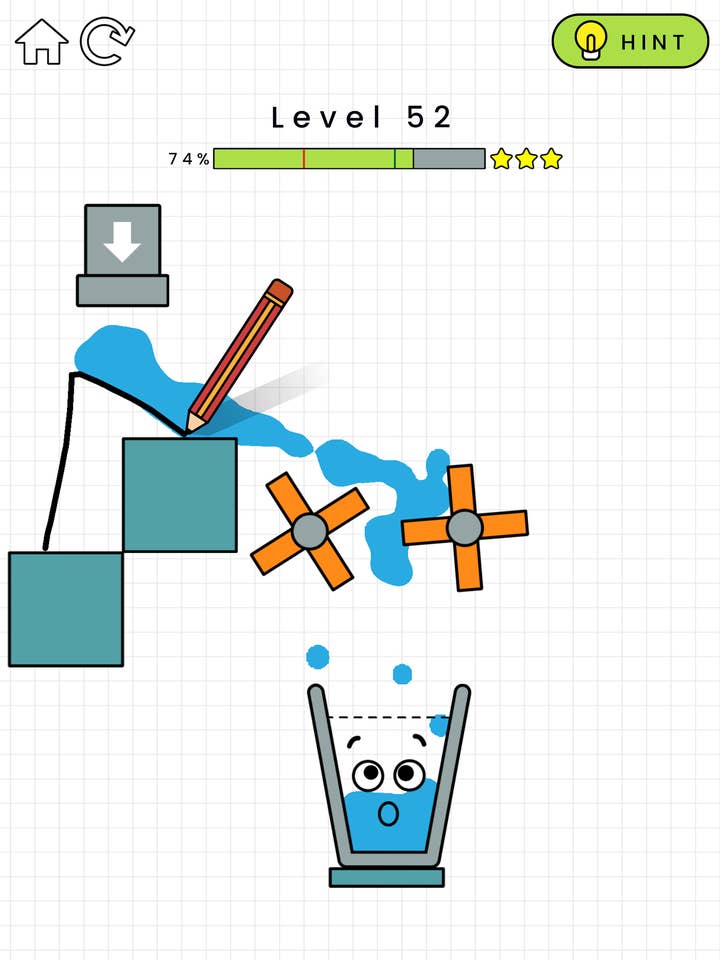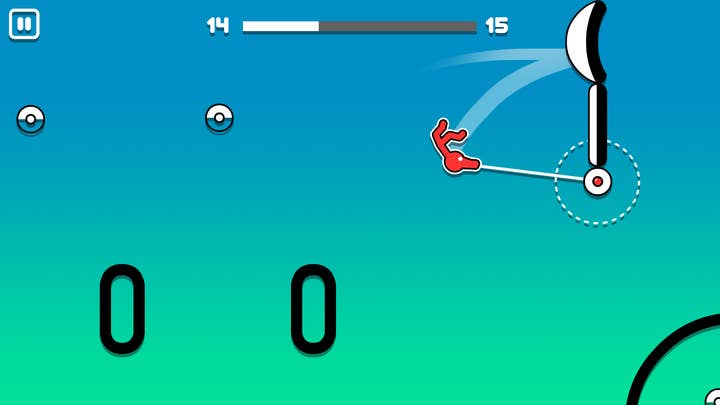Why you need to get your game loop right | Opinion
AppLovin's Carl Livie looks at hyper casual titles that can teach developers how to hook players instantly with a compelling mechanic
It's often said that you have seven seconds to make a good first impression. After all, people are quick to judge and if that initial encounter is bad, it's hard to recover.
The same holds true for games, particularly mobile games. Console and PC games have a certain safety net in that they're paid experiences. By paying, a player is more likely to push through a difficult first impression in order to make the most of their money. This luxury is not available to most mobile game developers.
Overwhelmingly, mobile games are free, meaning there's little reason for a player to stick with them for longer than they feel obliged. A bad first impression quickly leads to the player deleting the app and never thinking about it again. To make a good first impression that keeps the player sticking around, it's crucial for developers to implement a satisfying core game loop.
How a core game loop empowers your players

A well-designed core loop encourages players to stick with the game past the initial early few seconds. It's those initial moments where you appreciate that a game is 'easy to learn yet hard to master', enticing one into learning more about the game by curiosity. There needs to be a clear goal so players feel flattered by their ability to figure things out fast.
Such feeling creates a feeling of achievement, empowerment and reward for beginners so that players feel enthusiastic and want to keep playing. Players respond well to feeling like they've achieved something quickly. After all, everyone likes to feel smart.
All of these elements are vital for building engagement, retention, and monetization. Additional layers of depth and difficulty can then be added for an extra challenge to create an even greater sense of achievement and empowerment. The key here is to add those layers only once players have already been hooked by the original, simple concept. It's important that players aren't overwhelmed or confused by too many ideas being thrown at them at once, otherwise, they'll end up deleting the app and going elsewhere.
The growth in hyper-casual games on mobile is evidence of the power of an effective game loop. Games can have incredible graphics, deep gameplay mechanics, and a satisfying narrative, but if the core game loop misses the mark, then players lose interest. Essentially, game loops are the most important part of any title when it comes to keeping players keen.
Let's take a look into some of the most effective examples of a well-designed game loop, and why it pays to make it a priority throughout one's design.
Happy Glass

Happy Glass combines one of humanity's more base instincts: the urge to be imaginative. The idea is simple enough; a water pipe releases water into the level and it's down to the player to lead it into the direction of a glass. There are no awkward controls here -- players intuitively use their finger to draw the line and wait to see what unfolds.
Because of this, Happy Glass is instantly snackable. It's possible to achieve something within seconds while still being able to return to where you left off at a later time. Its intuitive controls ensure players know what to do, even when new gameplay mechanics like hot surfaces and blocked-off drawing areas are introduced. Such thinking taps into Lion Studios' methods of ensuring its products are snackable, shareable, straight forward, rewarding, and innovative.
A simple interface makes Happy Glass look welcoming but also offers up opportunities for friendly reminders of the game studio's other games, relying on the trust that has already been built through playing Happy Glass. Retention here isn't just about keeping players in Happy Glass but keeping them entranced by other titles from the same developer. An advert on the home screen of the game constantly serves as a subtle reminder to try the studio's other titles. This cross promotion helps studios retain players within their own portfolio of games.
Ads are served at regular points, offering up free coins and hints. There's room too for buying new colors of water, new pencils, or smiley faces for the glass. All of these additions are aesthetic in nature, rather than adding to the game's mechanics, but they're ideal for helping players feel like they've accomplished something while boosting retention.

Stickman Hook
Stickman Hook's greatest strength is its immense simplicity. Like Happy Glass, there's no need for a tutorial. Instead, players simply tap on the screen to hook onto something and release to let go. The aim is to reach the end of the level at speed in a process that typically (when done correctly) takes mere seconds. Gradually, more complicated game mechanics are introduced but it's at a steady pace so that players are never intimidated by what's to come. Intuitive controls make players feel smart and in control, even if they've haven't played the game before.
Much like Happy Glass, Stickman Hook is highly snackable. It doesn't require a great time commitment to achieve something. Instead, players can dip in and out seamlessly while rewarding its players at regular points.
If a player finds himself failing a level once or twice, the offer of watching a video in exchange for skipping the stage is provided. Similarly, new skins can be unlocked through watching video ads with a steady stream of new content enticing players into taking the time hit and watch an advert. Stickman Hook offers a compelling urge to unlock something new consistently throughout the game.
Again, the interface is simple and clear. There's also a subtle reminder that the studio, MadBox, makes other titles, keeping players within the ecosystem of one studio, rather than running the risk of the player going elsewhere for their gaming fix.

Love Balls
Love Balls' rules are simple enough. One simply has to find a way to bump two balls together through drawing lines or shapes to help the balls meet up. There are no awkward controls here. Instead, players use their finger to draw the line and wait to see what unfolds.
Through being so straightforward, there's no need to be refreshed on what to do either. Such thinkings tap into Voodoo's methods of ensuring its products are YouTubable, straight forward, not punitive, and innovative -- a trend that we'll see continue in all these examples.
Dash Valley
Like Stickman Hook, Dash Valley's mechanics are extremely simple and easily explained without tedious onboarding. The main menu shows you everything you need to know -- drag your finger to sling the ball and tap and hold the screen to slow down time. This simple mechanic proves increasingly challenging with new environmental obstacles that players need to learn to overcome.
Gameplay is addictive and fun, with a clear game loop that allows developer MadBox to optimize its ad strategy. Players can complete two levels before an ad is served at the end of a level. MadBox also offers up rewarded videos to revive yourself and for cosmetic skins.
There's also a progress bar at the top so players know exactly how far they have to go to complete the level, enticing them to try again. This helps create a game loop that's transparent, rewarding, and keeps players coming back for more.
The takeaway
These games may play very differently but they have crucial similarities when it comes to their core game loops. All of these games lure their players with simple mechanics so that even newbies can figure things out. Slowly, new game mechanics can be introduced while ramping up the difficulty level.
By adding these layers at key points, they've already grabbed the attention of the player, ensuring that they're willing to adapt and learn slightly new methods. Mobile games are dependent on having welcoming difficulty curves rather than challenging the player too quickly. An intuitive nature is vital for mobile games.
Once the player has been entranced by what unfolds, it's the perfect time to offer monetization features such as reward-based adverts that boost the game in some way. Such rewards then entice the player into doing more and therefore the game loop is complete. The player is happy and sticks around for more, watching and clicking on more ads to gain that precious multiplier, and the developer enjoys high retention rates and maximizes monetization. All of this is only possible in a mobile game with a strong core game loop.
Carl Livie is managing director for Europe at mobile marketing platform AppLovin, which runs publishing division Lion Studios
